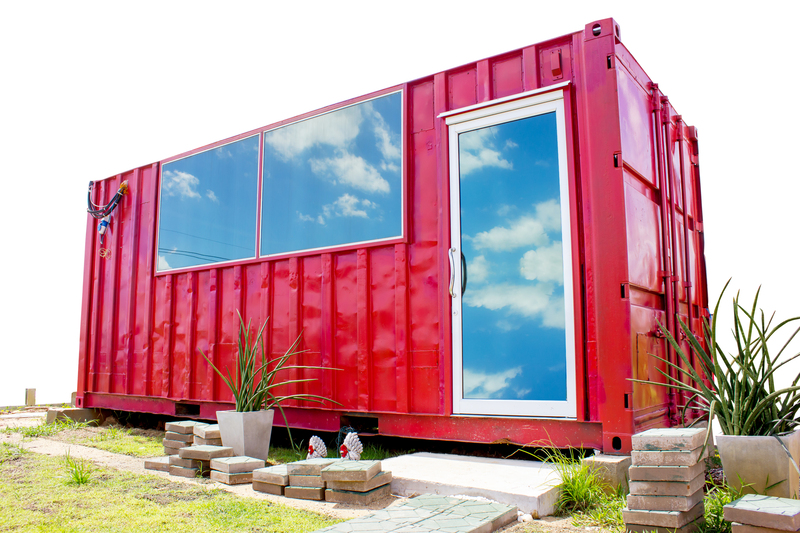Step-by-Step Guides to Upcycle Waste Materials into Useful Creations
Upcycling waste materials is not just a trendy buzzword--it's a crucial movement towards a more sustainable and environmentally friendly lifestyle. Whether you're hoping to reduce household waste, save money, or express your creativity, learning how to upcycle waste materials into useful creations is an exciting way to contribute positively to both your home and the planet. In this comprehensive guide, we'll cover step-by-step upcycling tutorials while offering inventive project ideas for transforming trash into treasure.
Why Upcycling Waste Materials Matters
Before diving into our hands-on guides, let's understand why upcycling is important:
- Environmental Impact: Upcycling reduces landfill waste, lessens demand for new products, and minimizes carbon emissions.
- Economic Benefits: Creating useful items from throwaways saves money and sometimes allows for extra income if you choose to sell your creations.
- Personal Satisfaction: There is a unique joy in crafting new things from old materials, leading to a sense of accomplishment and creativity.

Getting Started: Upcycling Tools and Basic Materials
Gathering the right tools is essential for successful upcycling projects. While some guides can be completed using only household basics, a few inexpensive purchases can greatly expand your options.
Suggested Upcycling Tools
- Scissors and craft knives
- Hot glue guns and strong adhesives
- Paints, brushes, and sandpaper
- Needle, thread, and sewing kits (for projects involving textiles)
- Measuring tape and rulers
- Safety gear: gloves, masks, and goggles for some materials
*TIP: Always clean and dry your waste materials before upcycling for the best results!
Step-by-Step Upcycling Guides for Common Waste Materials
Explore these illustrated guides to turn everyday waste items into useful upcycled creations, ranging from home decor to practical organizers.
1. Transforming Plastic Bottles into Hanging Planters
- Materials Needed: Empty plastic bottles, scissors, paint, string, and soil/plants.
- Clean your bottles thoroughly and let them dry.
- Cut the bottle in half or make a window on one side for planting.
- Decorate with paints or leave as is for a minimalist look.
- Make small drainage holes at the bottom to prevent waterlogging.
- Attach string to both sides and tie securely so you can hang your planter.
- Fill with soil and your favorite plants!
2. Creating Magazine or Newspaper Baskets
- Materials Needed: Old magazines or newspapers, glue, scissors, and a small box for shaping.
- Cut pages into long strips (about 1 inch wide).
- Roll each strip tightly and secure with a dab of glue.
- Flatten each roll using a ruler or the edge of a table.
- Weave the rolls together, using a box as a mold to help form the shape.
- Glue the ends as you go for stability.
- Remove from the mold and add a strong base if needed.
- Let dry completely before using your basket for storage or decor.
3. Upcycling Glass Jars into Storage Containers
- Materials Needed: Empty glass jars (from food or beverages), paint, labels, strong glue, small knobs.
- Wash jars thoroughly and remove any labels by soaking the jars in hot water.
- Decorate the jars by painting the lids, adding stickers, or tying on ribbons.
- Glue a knob onto the lid for easy opening and extra style.
- Label your jars for spices, pantry items, crafting supplies, or bathroom essentials.
- Enjoy your new stylish and functional storage!
How to Upcycle Old Clothes into Tote Bags
Another innovative way to upcycle waste textiles is by transforming unwanted clothes into practical tote bags.
Materials Needed:
- Old t-shirt or shirt
- Scissors
- Needle and thread (or a sewing machine)
Step-by-Step Instructions
- Lay the shirt flat and cut off the sleeves, neckline (for handles), and hem (optional).
- Turn the shirt inside out and stitch the bottom edge closed using a strong stitch for durability.
- Flip right side out: The armholes and neck now serve as handles.
- Customize by adding patches, pockets from other garments, or prints.
- Enjoy your new eco-friendly tote bag for shopping or storage!
Creative Upcycling: Turning Tin Cans into Desk Organizers
Tin cans are abundant and versatile. Instead of throwing them out, try this simple and useful upcycling project for home or office organization.
Materials Needed:
- Empty tin cans
- Paint, washi tape, or decorative paper
- Hot glue gun
- Felt or cork sheet (optional, for the base)
Step-by-Step Guide
- Carefully clean and dry your tin cans, ensuring there are no sharp edges.
- Decorate the exterior: paint your cans, wrap them with washi tape, or glue on decorative paper for a colorful look.
- Add felt/cork to the bottom for scratch protection and stability.
- Group several cans together using the hot glue gun to create a multi-compartment desk organizer.
- Let everything dry completely before use.
Simple DIY: Cardboard Upcycling Projects
Cardboard from old packaging, boxes, or shipping containers can be magically transformed into a range of useful upcycled items.
Ideas for Cardboard Upcycling
- Drawer Dividers: Cut cardboard to size and create dividers for organized storage.
- Laptop Stand: With precise cutting and folding, cardboard can make a surprisingly sturdy, eco-friendly laptop stand.
- Kids' Art Projects: Build playhouses, masks, or 3D animals--great for fun, educational activities at home.
Tips for Successful Upcycling Projects
- Choose Quality Waste: Select items that are clean and structurally sound.
- Be Creative: Look at waste materials from a new perspective--what can it become?
- Combine materials to create more elaborate and unique creations.
- Don't Rush: Allow adhesives and paint to fully cure or dry for a longer-lasting product.
- Safety First: Always use sharp tools and chemicals with care, and work in a well-ventilated area.
Advanced Upcycling Projects for Enthusiasts
Once you've mastered the basics, take things further with these ambitious upcycling projects:
Wooden Pallet Furniture
- Source clean pallets (often free from local businesses).
- Disassemble and sand the wood as needed.
- Assemble into coffee tables, shelves, or even garden furniture.
- Decorate and finish with wood stain or paint for a customized look.
Electronics Repurposing
- Turn old computer parts into unique clocks, lamps, or art.
- Harvesting rare metals or small LEDs for other creative projects.
Upcycled Mosaic Art
- Collect broken ceramics, tiles, or glass.
- Arrange and glue them onto a surface to create beautiful wall hangings, trays, or tabletops.
Organizing a Community Upcycling Workshop
Upcycling is even more rewarding when done together. Organize a local workshop or event to share upcycling skills, exchange materials, and inspire others to join the movement. Here's how:
- Gather materials from participants to ensure variety and inspiration.
- Share guides, tips, and demonstration projects like those above.
- Encourage everyone to bring home their own unique upcycled creations.

Maximizing SEO: Upcycle Waste Materials into Useful Creations
To ensure your upcycling projects reach a wider audience online, use varied keywords such as:
- Upcycle waste
- DIY upcycling guides
- Sustainable upcycling crafts
- Transforming waste into useful items
- Repurposing household waste creatively
This approach helps drive more traffic to your content, inspiring even more people to adopt waste upcycling and contribute to a cleaner, greener planet.
Conclusion: Making Every Item Count
Upcycling waste materials is a practical, eco-friendly, and highly enjoyable process that anyone can embrace. By following these step-by-step upcycling tutorials and thinking creatively, you'll discover endless ways to repurpose waste into useful creations for every aspect of daily life.
Remember: Each item you upcycle makes a difference! Share your projects, encourage others, and be part of the movement to turn "waste" into something wonderful.
Ready to Get Started?
Gather your tools, save those would-be throwaways, and explore new possibilities by upcycling waste into functional and beautiful treasures. Happy crafting!